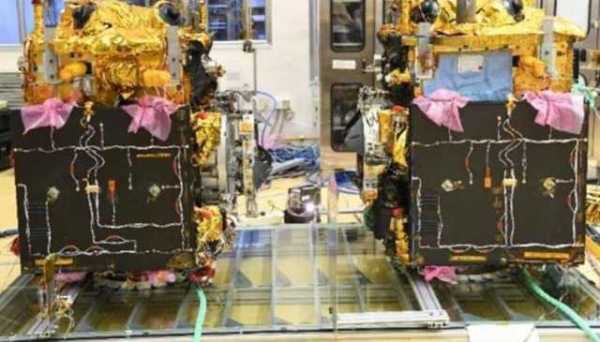

India is set to achieve another milestone in its space journey as ISRO gears up to launch the SpaDex mission on Monday, December 30, at 9:58 PM.
SpaDeX (Space Docking Experiment) is ISRO's final mission for 2024. It is a budget-friendly mission designed to demonstrate the technology for docking in space, which involves connecting or merging two small spacecraft. The mission will be launched using the PSLV rocket.
This technology is crucial for India’s future space goals, including sending humans to the Moon, bringing back samples from the Moon, and building and operating the Bharatiya Antariksh Station (BAS).
SpaDEX will be an important achievement, demonstrating India’s skill in spacecraft docking technology.
With this mission, India is on its way to becoming the fourth country in the world to develop space docking technology, ISRO announced in a statement.At present, only three countries—the United States, Russia, and China—can connect two spacecraft in outer space.
The additional goals include:
1. Transferring electricity between docked spacecraft is important because it allows one spacecraft to power the other. This capability is essential for future missions involving in-space robots, as these robots often require a steady power supply to perform tasks like repairs, assembly, or experiments in space.
By sharing power, spacecraft can support robotic systems without relying solely on their own limited energy sources, such as batteries or solar panels. This makes long-term operations in space more efficient and reliable.
2. Managing how the joined spacecraft work together as one unit and handling the tasks of the payload (equipment or experiments) after the two spacecraft separate. This ensures smooth operations both while connected and after undocking.
Two small spacecraft, Target and Chaser, each weighing about 220 kg, will be launched together by PSLV-C60. They will be placed independently and at the same time into a low Earth circular orbit. The mission is expected to operate on a cycle of about two years.
The PSLV rocket's accuracy will be used to create a small difference in speed between the Target and Chaser satellites when they are released into space.
This slight change in speed will help the Target satellite move 10-20 km away from the Chaser satellite within a day.
After this manoeuvre, the Target and Chaser satellites will move in the same orbit at the same speed but will stay about 20 km apart. This is called Far Rendezvous.
Rendezvous means two objects meeting or coming close together in space after starting from different positions or paths.
To achieve docking, the Chaser spacecraft will gradually approach the Target using a carefully planned strategy. By adjusting and compensating for small speed differences between the two, the Chaser will close the gap in stages, reducing the distance step by step—from 5 km to 1.5 km, then to 500 m, 225 m, 15 m, and finally just 3 m, where the docking will take place.
Although both satellites will be travelling at an incredible speed of 28,800 kilometres per hour—about 36 times faster than a commercial aeroplane or 10 times faster than a bullet—their relative speed will be reduced to almost zero. Using advanced thrusters and sensors, their relative speed will be brought down to just 0.036 kilometres per hour, or around 10 millimetres per second. This extremely slow and precise approach ensures a smooth and safe connection between the two spacecraft.
Once the satellites successfully dock and secure their connection, they will demonstrate the transfer of electrical power between them. After this, they will undock and separate to begin operating their instruments for their planned mission, which is expected to last up to two years.
The Chaser satellite has a High-Resolution Camera, which works like a smaller version of a surveillance camera. Meanwhile, the Target satellite carries a Miniature Multi-Spectral Payload, which can capture images useful for studying natural resources and monitoring Vegetation (plants, trees, and other greenery)
"PSLV's POEM-4: 24 Payload Experiments"SpaDEx will also use the fourth stage of the PSLV rocket, known as POEM-4, to conduct experiments. This stage will carry 24 payloads from various academic institutions and startups. These experiments will take advantage of the microgravity conditions in space.
24 payloads include 14 developed by ISRO and the Department of Space, and 10 from private organizations like universities and startups, supported by IN-SPACe.
Karnataka Engineering Colleges Shine in POEM 4 Project
Two engineering colleges from Karnataka have made significant contributions to the 10 payloads for the POEM 4 project by Spadex.
1. Biological Studies :
- RV College of Engineering, Bengaluru is researching the growth kinetics of gut bacteria.
2. BGS ARPIT :
- Designed by SJC Institute of Technology, Chikkaballapura, this payload transmits messages—including audio, text, and images—from the satellite to Earth using FM signals and the VHF band. This technology aids amateur radio services worldwide.
SJC Institute of Technology, established in 1986 and located near Bengaluru, is managed by the Sri Adichunchanagiri Shikshana Trust. This trust operates under the blessings of Jagadguru Sri Sri Sri Dr. Balagangadharanatha Maha Swamiji and the guidance of Jagadguru Sri Sri Sri Dr. Nirmalanandanatha Maha Swamiji, an esteemed IIT alumnus.
Together, these institutions highlight Karnataka's commitment to advancing science and engineering through innovative research and technology.
India